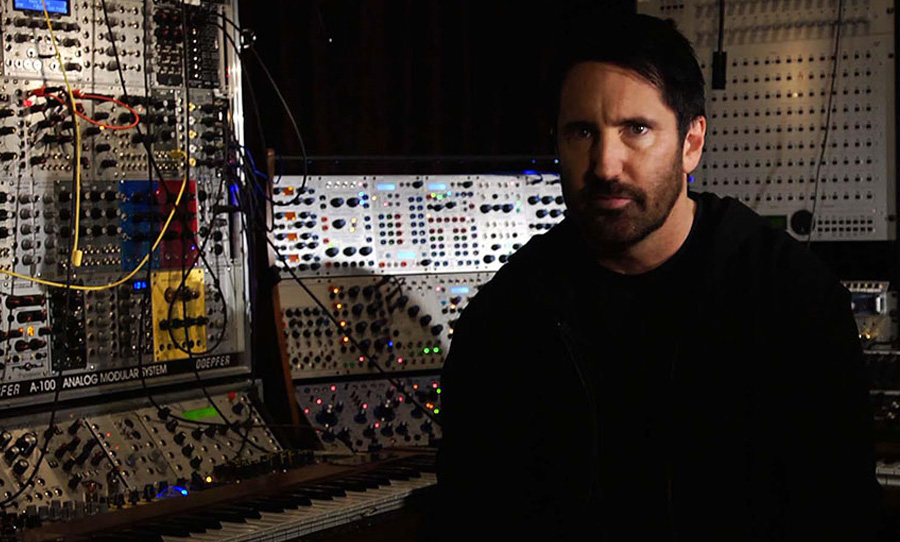The Downward Spiral was a ’90s cultural touchstone. In Into the Never, Adam Steiner explores the Nine Inch Nails classic from every angle.
If you had to guess, where would you say The Downward Spiral came together? The sun-bleached Hollywood Hills would probably be close to last on your list. But as Adam Steiner explains in Into the Never (Backbeat Books), this album and its visionary creator subverted expectations in more ways than one.
This kaleidoscopic analysis of the album, its production, and surrounding culture is thoughtfully crafted as much as it is thought-provoking. As the author modestly observes, “It is difficult to write about music.” The experience of reading this book, however, is anything but.

Some chapters are named after the songs on The Downward Spiral tracklist. These moments on the album serve as leaping-off points for Steiner’s extended discussions around its (sometimes painful) birthing process, critical reception and relation to the zeitgeist of the mid-’90s, and also, what fuelled the creative fire of Trent Reznor, the Nine Inch Nails mastermind.
As Steiner reminds us early on:
“Trent Reznor’s great musical achievement was to bring the computer to the studio to the fore as instruments in their own right in an era when the potential of music production software was still emerging.”
Regular readers of the features on Enmore Audio will understand that while the digital audio workstation is now ubiquitous, its history is relatively short. Computer power has increased exponentially even within the last decade — so imagine the process of making computer-based music in the early ’90s.

These hard limits contributed to Reznor’s frustrations, but they were also clearly inspirational. In the creation of The Downward Spiral, Reznor fought stridently against the accepted conventions of the time. Fortunately for him, his label at the time gave him carte blanche to pursue the record in any way he saw fit. Hence the house in the Hollywood Hills. But not just any house: it was the scene of the Manson family murders of 1969.
But the infamous address was no surprise to Reznor, as Steiner explains, “Like many others, he had been there before — through television, shock-horror magazine articles, and documentary interviews Reznor had explored the Manson legend, and he now found himself isolated within it.” Despite the house’s grizzly provenance, Reznor felt at ease, so much so he locked himself in there for months on end, working relentlessly on the record.
And it was in this crucible that Reznor — with the assistance of a revolving crew of collaborators — forged this timeless collection of tracks. In the tail end of grunge, the rock blueprint — at least in terms of a song’s structure (big, singalong choruses, quieter verses) had been set in stone. Reznor’s answer was to heighten the drama by slamming together contrasting sonic elements. Take the almost comically twee piano break in the otherwise relentless assault of March of the Pigs.
And though some could argue that Nine Inch Nails profited handsomely from shock value, Steiner is quick to acknowledge that Reznor’s schooling in the synth-pop of Gary Numan and Depeche Mode was just as influential as his industrial background. The unforgettable chorus refrain in Closer gets all the headlines, but it can also be admired as a dark disco banger, bursting with an absolute cornucopia of hooks.
Growing up as an outsider in Mercer, Pennsylvania, Reznor was destined to approach his art in this way: cleverly absorbing outside influences (there wasn’t much inspiration to be found in his hometown in the American ‘Rust Belt’), but applying them to his original work in his own way. The perceived violence of the Nine Inch Nails experience was sometimes met with actual violence (even bomb threats at shows), and if not outright attacks, a consistent appraisal from the mainstream media that was never more nuanced than ‘controversial’.
But Adam Steiner’s extended analysis of The Downward Spiral and the elevation of its creator to superstardom avoids the one-dimensional trap. A thoroughly researched and at times thrilling read invites readers deep into the mind of an intensely creative musician. Into the Never provides a comprehensive picture of the society which birthed the album and how, in turn, it was impacted by it.
Into the Never: Nine Inch Nails and the Creation of the Downward Spiral is out now via Backbeat Books.



